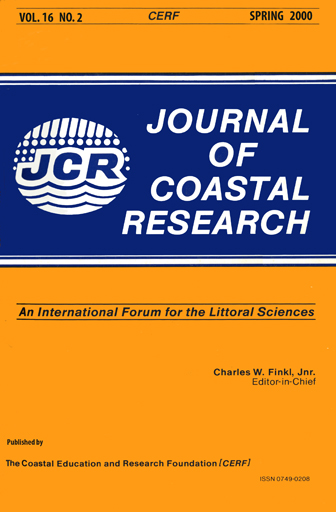Short-Term Consequences of Nourishment and Bulldozing on the Dominant Large Invertebrates of a Sandy Beach
Keywords:
Beach nourishment, beach bulldozing, coastal erosion, beach macro-invertebratesAbstract
Biological responses of the dominant beach macro-invertebrates to beach nourishment and bulldozing, two widely practiced structure-free methods of responding to shoreline erosion, were evaluated along Bogue Banks, North Carolina. Sediments taken from maintenance dredging of a channel in Bogue Sound and used for beach nourishment in a replicated design were substantially finer (3.67 vs 2.33 Φ) than those of untreated beaches and contained large concentrations of shell hash. In response to nourishment, densities of Emerita talpoida and Donax spp. were lower by 86-99% on nourished beaches in early-mid July, 5-10 weeks after cessation of the nourishment project. Beach bulldozing done to augment the primary dune reduced the width of the intertidal beach by about 7 m and replaced it with a wedge of coarser, shellier sand taken from the lower beach. In late July-early August about 3 months after termination of bulldozing, counts of active burrows of ghost crabs Ocypode quadrata were 55-65% lower on bulldozed beaches, with most of the reduction occurring on the 7 m of high beach occupied by the newly formed dune face. Despite no detectable difference in slope of the lower beach, Emerita talpoida densities were 35-37% lower on bulldozed beach segments of 0.5- and 3-km, and, while Donax spp. exhibited no consistent residual response to bulldozing, two of three contrasts showed increased abundances of >100% on bulldozed segments. Failure of Emerita and Donax to recover from nourishment by mid summer when they serve as a primary prey base for important surf fishes, ghost crabs, and some shorebirds may be a consequence of the poor match in grain size and high shell content of source sediments and/or extension of the project too far into the warm season. Effects of bulldozing on ghost crabs may conceivably be mitigated by measures to stabilize the dune face after bulldozing, but the effects on Emerita and Donax are not easily interpreted so potential mitigation measures for mole crabs and bean clams are unclear.


